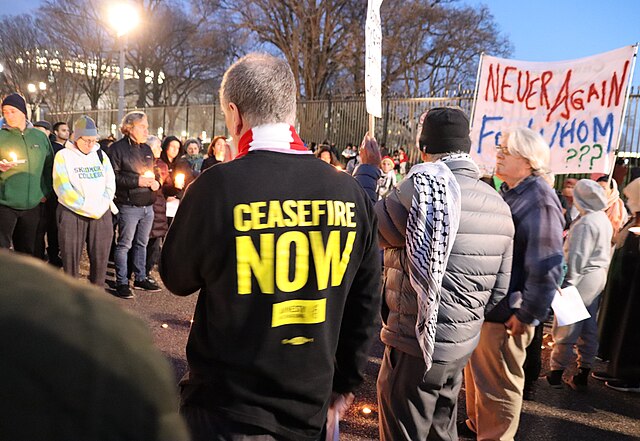The Christmas truce was a series of widespread unofficial ceasefires along the Western Front of the First World War around Christmas 1914.
Soldiers from both sides (the British and the German) exchange cheerful conversation (an artist's impression from The Illustrated London News of 9 January 1915: "British and German Soldiers Arm-in-Arm Exchanging Headgear: A Christmas Truce between Opposing Trenches").
A cross, left in Saint-Yves (Saint-Yvon – Ploegsteert; Comines-Warneton in Belgium) in 1999, to commemorate the site of the Christmas Truce. The text reads: "1914 – The Khaki Chums Christmas Truce – 1999 – 85 Years – Lest We Forget"
This photo is commonly mistaken as taking place during the 1914 Christmas truce. It is actually from 25 December 1915 near Thessaloniki, Greece. It shows British officers playing other ranks of the British 26th Divisional Ammunition Train.
British and German troops burying the bodies of those killed in the attack of 18 December
A ceasefire, also spelled cease fire, is a stoppage of a war in which each side agrees with the other to suspend aggressive actions, often due to mediation by a third party. Ceasefires may be between state actors or involve non-state actors.
A truce—not a compromise, but a chance for high-toned gentlemen to retire gracefully from their very civil declarations of war By Thomas Nast in Harper's Weekly, February 17, 1877, p. 132.
British and German officers after arranging the German handover of the Bergen-Belsen concentration camp and the surrounding area, negotiated during a temporary truce, April 1945
Christmas Eve Ceasefire Vigil at the White House in Washington, D.C. on 24 December 2023







